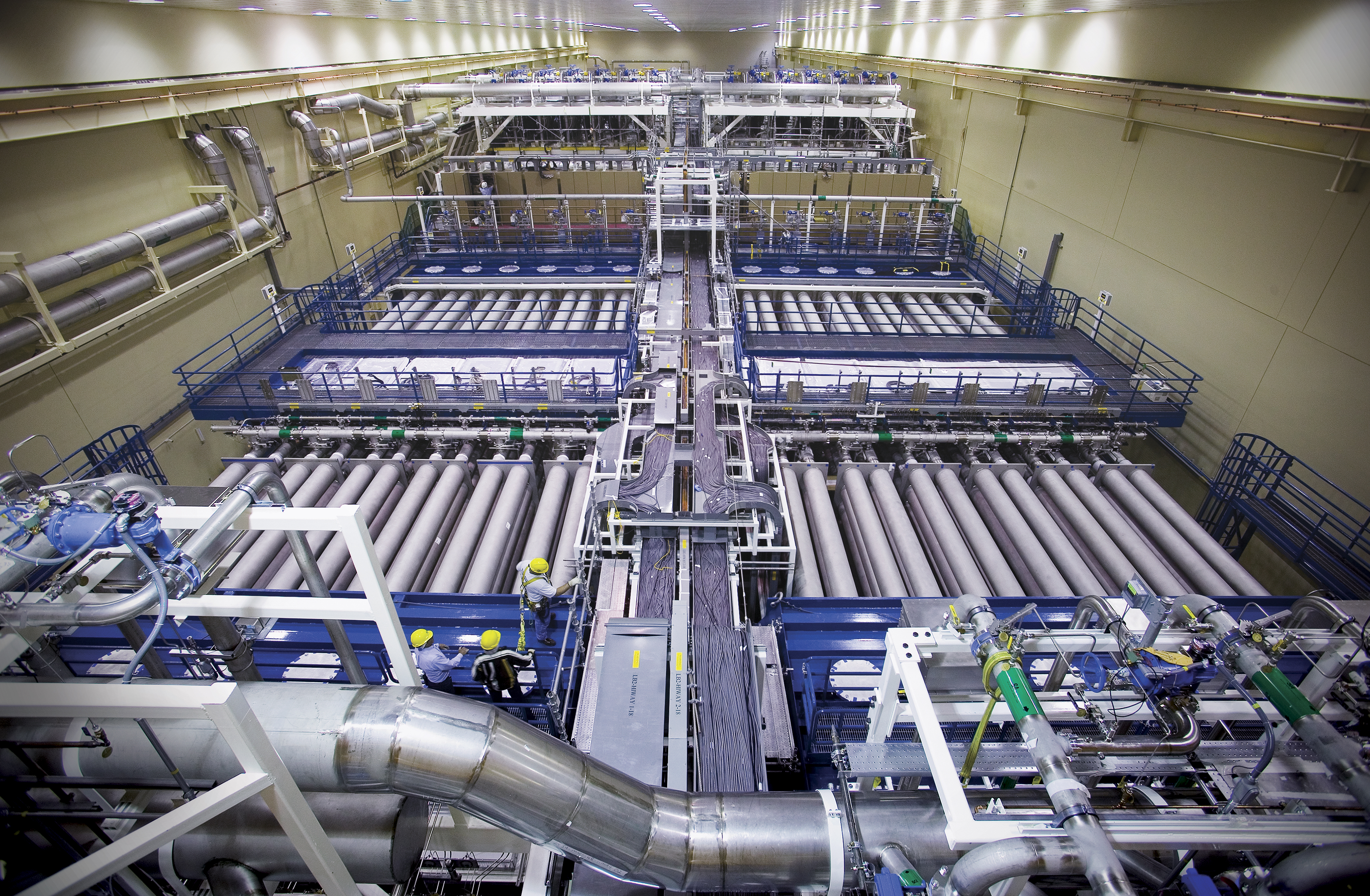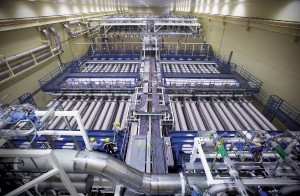
Fusion Milestone Elusive – But Worth It
 On Saturday, The New York Times ran an article on the National Ignition Facility (NIF) at the Lawrence Livermore National Laboratory.
On Saturday, The New York Times ran an article on the National Ignition Facility (NIF) at the Lawrence Livermore National Laboratory.
The NIF holds 192 of the world’s largest and most energetic lasers. It was built for the dual purposes of testing inertial fusion energy and for ensuring the viability of nuclear weapons, without testing them.
The article focuses on the NIF’s failure to achieve “ignition” – the point at which net energy from a fusion reaction is achieved – before a pre-determined deadline of the end of the 2012 fiscal year (September 30). Researchers have not yet reached that goal. Despite the delay, the lab’s scientists believe they are on the path to ignition.
While Congressional action in both the House and Senate Appropriations committees have noted “concern” about the failure to achieve ignition, and have asked for a report on the failure, both Houses have continued support for the pursuit of ignition. The Lawrence Livermore National Laboratory, together with its partners at the Laboratory for Laser Energetics at the University of Rochester, Los Alamos National Laboratory, Sandia National laboratory, and General Atomics, joined to form the National Ignition Campaign.
The goal of the campaign is to achieve net energy gain from Inertial Confinement Fusion, and to demonstrate the promise of fusion energy. Before we consign a $5 billion investment in government research to the dustbin, as some quoted in the article seem to want to do, we should take a careful look at the notable successes the NIF has had and how close the facility is to achieving a goal that has eluded the world’s best scientists for over 50 years.
In the summer of 2012, NIF lasers delivered 500 terawatts of power, which 1,000 times more power than all of the electricity being produced in the United States at any one moment in time.
NIF is already producing energy from its fusion reactions, and has increased output by several orders of magnitude in the past few years. Moreover, the National Academy of Sciences stated that in regards to the NIF, it was “impressed with the quality of the science and technology and how much progress has been made in the past decade.”
As the Director of NIF laboratory, Penrose Albright, noted, the deadline is arbitrary. The goal coincided with the end of the fiscal year for budgetary reasons, not based on scientific parameters. Director Albright said, “It’s like having a cure for cancer by a certain date. I understand why people want to have milestones. But when you’re dealing with science and Mother Nature, all you really can do is agree on whether you’re on the right path.” And scientists do believe that their research is close to coming to fruition.
The important question is not whether the NIF failed to meet its goal by the end of the fiscal year. The more important question is whether or not the facility’s research is worth the investment. We at ASP believe that the potential benefits that could result from breakthroughs in fusion energy research – a clean, safe, secure and abundant source of energy – are worth greater investment.
The NIF deserves strong support from both the public and the U.S. Congress. In the realm of big public investments in science, predicting the date at which major achievements will occur is impossible. There are also countless examples of significant scientific breakthroughs coming from persistent research from both the public and private sector.
Examples like GPS technology, nuclear power, aviation, the internet, all required years of painstaking work and public dollars. Moreover, for the above examples, policymakers did not predict the commercial applications and positive spillover effects resulting from the research.
The NIF’s mission is an important one. Just because it missed an arbitrary deadline does not mean its work is not valuable. ASP released a fact sheet on the NIF last month.
To read it, click here. Also, check out ASP’s fusion mini-site by clicking here.






[…] Fusion Milestone Elusive – But Worth It […]